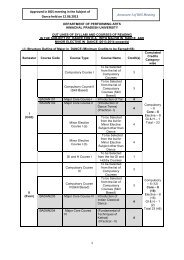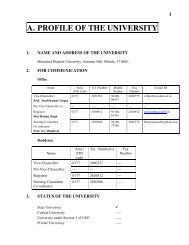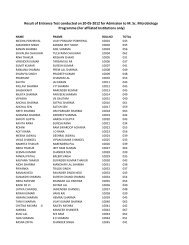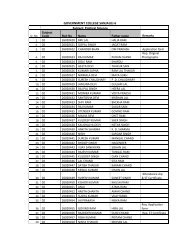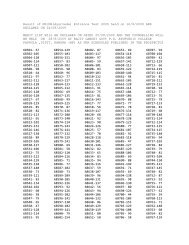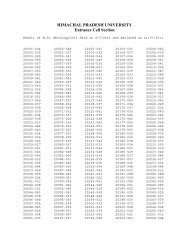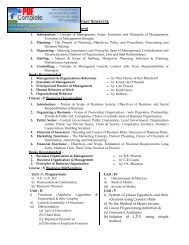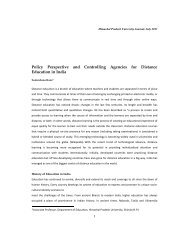Detailed Syllabus- Outline, End Term Exam Guidelines, Structure, etc.
Detailed Syllabus- Outline, End Term Exam Guidelines, Structure, etc.
Detailed Syllabus- Outline, End Term Exam Guidelines, Structure, etc.
Create successful ePaper yourself
Turn your PDF publications into a flip-book with our unique Google optimized e-Paper software.
12Course Content and Credit SchemeUnit Topic Allotted Time(Hours)L T PI. INTRODUCTION TO REGIONAL GEOGRAPHY7 2 0i. Region – Definitionii. Methods of Delineation of Regions – Formal And FunctionalRegionsiii. Natural components of regionsa. Landforms: Types and Distributionb. Climate: Types and Distributionc. Soils: Types and Distributiond. Natural Vegetation: Types and Distributioniv. Bases of RegionalizationII. HOT REGIONS8 4 0(Location and Characteristic Features)a. Equatorial Regioni. Highland and Lowland Regionsb. Tropical Region;i. Monsoon Regionii. Tropical Grasslandiii. Tropical DesertsIII. WARM TEMPERATE REGIONS8 4 0(Location and Characteristic Features)i. Warm Temperate Regionsa. Mediterraneanb. Temperate Grasslandsc. China typeIV. COOL TEMPERATE & POLAR REGIONS8 4 30(15)*(Location and Characteristic Features)i. Cool Temperate Regions:a. British Type or Marine West coastsb. Siberian Typec. Laurentian Typeii. Polar Regionsa. Highland or Ice cap Typeb. Lowland or Tundra Typeiii. Project on any One RegionTotal Hours 31 14 30(15)*L-Lecture, T-Tutorial and P-Practical and Practices*As per the weightage assigned to the P (Practical and Practices) category in the CBCSregulations 2 hours practical work has been treated equal to 1 credit. Therefore, in this coursepaper, the laboratory/ field work and preparation of practical/project record/report for additional



